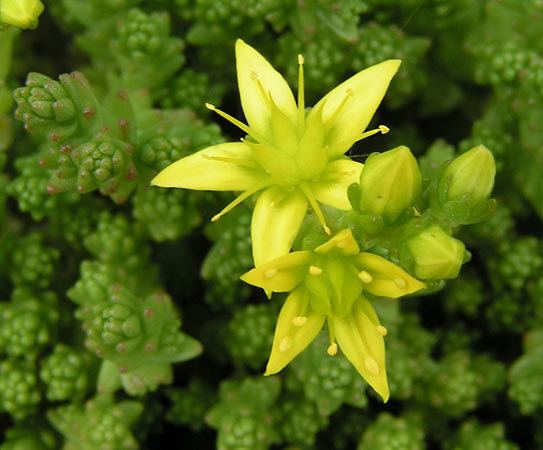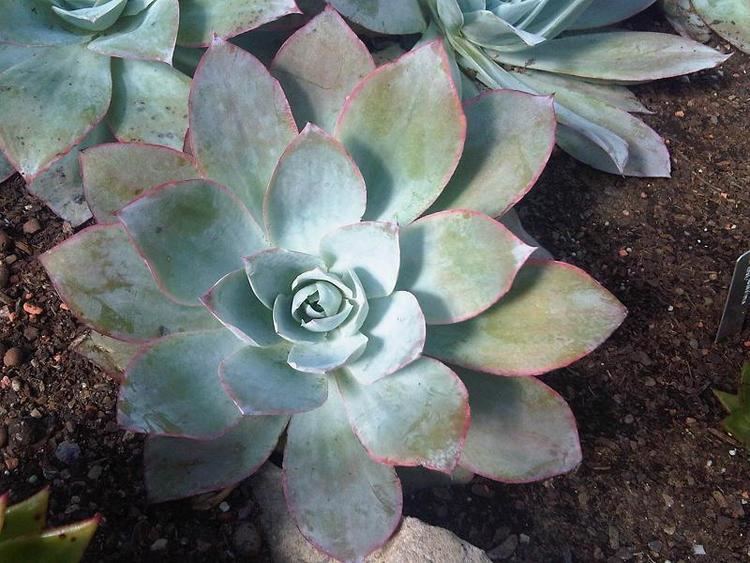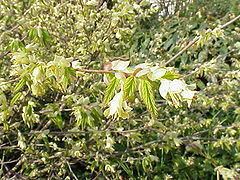Kingdom Plantae Clade Eudicots Clade Superrosids Higher classification Eudicots | Clade Angiosperms Clade Core eudicots Scientific name Saxifragales Rank Order | |
 | ||
Lower classifications Crassulaceae, Stonecrop, Saxifragaceae, Pigmyweeds, Widow's‑thrill | ||
Crassula portulacea order saxifragales
The Saxifragales are an order of flowering plants. Their closest relatives are a large eudicot group known as the rosids by the definition of rosids given in the APG II classification system. Some authors define the rosids more widely, including Saxifragales as their most basal group. Saxifragales is one of the eight groups that compose the core eudicots. The others are Gunnerales, Dilleniaceae, Rosids, Santalales, Berberidopsidales, Caryophyllales, and asterids.
Contents

Saxifragales have an extensive fossil record. The extant members are apparently remnants of a formerly diverse and widespread order.

The Saxifragales order, as it is now understood, is based upon the results of molecular phylogenetic studies of DNA sequences. It is not part of any of the classification systems based on plant morphology. The group is much in need of comparative anatomical study, especially in light of the recent expansion of the family Peridiscaceae to include Medusandra, a genus that before 2009 had usually not been placed in Saxifragales.

The order is divided into suprafamilial groups as shown on the phylogenetic tree below. These groups are informal and are not understood to have any particular taxonomic rank.
Families
Saxifragales contain about 2470 species. These are distributed into 15 families, or into 12 families if Haloragaceae sensu lato is recognized as a family consisting of Haloragaceae sensu stricto, Penthorum, Tetracarpaea, and Aphanopetalum. About 95% of the species are in five families: Crassulaceae (1400), Saxifragaceae (500), Grossulariaceae (150 - 200), Haloragaceae (150), and Hamamelidaceae (100). Most of the families are monogeneric. The number of genera in each family is:
Some authors do not recognize Choristylis as a separate genus from Itea. Similarly, some authors sink Liquidambar and Semiliquidambar into Altingia. Thus Altingiaceae and Iteaceae are monogeneric in some classifications.
History
Within the Saxifragales is a suprafamilial group known as the Saxifragaceae alliance. It comprises four families: Pterostemonaceae, Iteaceae, Grossulariaceae, and Saxifragaceae. These have long been known to be related to each other, but the circumscription of Saxifragaceae has changed dramatically. It is now a much smaller family than it had been. Crassulaceae and Tetracarpaeaceae have long been associated with Saxifragaceae. Penthorum has usually been associated with Crassulaceae, but sometimes with Saxifragaceae.
Two members of the core Saxifragales had sometimes been placed near Saxifragaceae, but usually elsewhere. Aphanopetalum was often placed in Cunoniaceae, a family in Oxalidales, even though there were good reasons to put it in Saxifragales. Aphanopetalum is now excluded from Cunoniaceae. Haloragaceae was often thought to be a family in Myrtales, but it is no longer included in that order.
Cercidiphyllaceae had for a long time been associated with Hamamelidaceae and Trochodendraceae and was often thought to be closer to the latter. Cercidiphyllaceae is now known to be a member of the woody clade of Saxifragales, along with Hamamelidaceae, Altingiaceae, and Daphniphyllaceae, but Trochodendraceae is in the basal eudicot order Trochodendrales. Altingiaceae was usually not separated from Hamamelidaceae until phylogenetic studies showed that its inclusion might make Hamamelidaceae paraphyletic. The recognition of Altingiaceae as a separate family received strong statistical support in 2008.
Daphniphyllum was always thought to have an anomalous combination of characters and it was placed in several different orders before molecular phylogenetic analysis showed it to belong to Saxifragales.
Paeoniaceae possesses many unique features and its taxonomic position was for a long time controversial. The idea has long persisted that Paeonia belongs in Ranunculales, close to Glaucidium. Paeoniaceae has been shown unequivocally to belong in Saxifragales, while Glaucidium is in the family Ranunculaceae.
The family Peridiscaceae underwent radical shifting and recircumscription from 2003 to 2009. Originally, it consisted of two closely related genera, Peridiscus and Whittonia. The APG II system placed the family in Malpighiales, based on a DNA sequence for the rbcL gene from Whittonia. This sequence turned out to be not from Whittonia, but from other plants whose DNA had contaminated the sample. After Peridiscaceae was finally placed in Saxifragales, it was expanded to include Soyauxia in 2007, and expanded again to include Medusandra in 2009.
Phylogeny
The phylogeny shown below is based on the one published by Shuguang Jian and coauthors in 2008. All branches have 100% maximum likelihood bootstrap support except where labeled with bootstrap percentage. Monogeneric families are represented by genus names.
